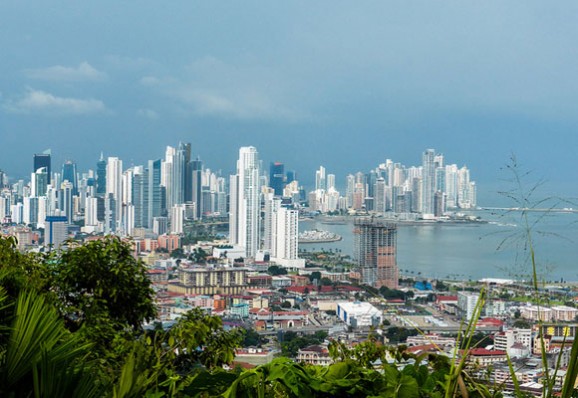First-World cities with every modern convenience, beachfront hideaways, medieval towns, tropical islands, temperate mountain valleys… You can chose your favorite climate, your preferred lifestyle…the place you feel most at home…because the world’s best retirement havens have it all… and for pennies on the dollar, too.
In this, our annual Global Retirement Index 2014, we profile the best destinations for good-value living around the world today.
We consider not only a wealth of statistics, but—critically—more than three decades of expertise and current insights from our network of correspondents.
Get Your FREE Report on the World’s Top Retirement Havens
See below for our experts’ more nuanced take on the top five finishers for 2014…but before you do, sign up for our FREE report on the world’s top 10 Retirement Havens.
Simply enter your e-mail below to subscribe to International Living’s free daily e-letter and we’ll immediately send your free report–The World’s Top 10 Retirement Havens
Get Your Free Report Here
Our experts—expats themselves—live in the places we rank and scout all over their adopted countries on your behalf.
Each year we ask them to respond to a long list of questions designed to get their fresh views on old places, and expert opinions on new ones. (For more on how we research our Index see below.) All the countries at the top of our Index were in close contention for the number one spot. But our winner—Panama—snags first place by a hair. Along with the world’s best range of retiree benefits, Panama has introduced new visas, which make it easier to gain residence there, and made major advances in infrastructure.
This means it simply out scores last year’s winner, Ecuador. Because of Spain’s economic crisis you’ll find more attractive opportunities there than ever to embrace an affordable life in the Old World, lifting that country into fifth place in our Index this year.
But whatever you see on our leader board below, just remember, we measure here only the very best havens. So the country last on our list—newcomer to the Index Cambodia—is still one of the best in the world.
In each of these destinations, you’ll find thousands of folks who have already found their dream retirements. You can too, and this 2014 Retirement Index is designed to get you started. It covers all the bases, revealing a wealth of choice when it comes to a comfortable life overseas… Let’s look at what the top five retirement havens in the world have to offer you…
Panama—Convenient, Easy and Affordable
Panama’s allure lies in a rare combination of value and variety. Plenty of places in the world offer one or the other. But how many offer both?
When it comes to attractive retirement destinations, the list is short and Panama is at the top. It’s the only country in Central America with a true First World city. But unlike most South American capitals, Panama City is only two-and a-half hours by plane from Miami. (And let’s not forget that, unlike some places closer to the U.S. border, Panama is hurricane free).
Nearly everything about Panama is convenient, particularly if you’re coming from North America. The currency is the dollar, English is widely understood, and the international community is large and welcoming. Even the littlest things are easy…your U.S. appliances will work here, no converters needed. And you can find anything you need, from gourmet ingredients to popular clothing brands.
Plus, no matter what you like to do… loll on the beach, golf a championship green, hike the highlands, join special interest clubs…you’ll be busy here. Unless, of course, you choose not to be. Spend as little—or as much—as you like. A good lifestyle is very affordable. Just be aware that it offers more temptation and opportunity to spend than some other overseas havens.
So if all these things are true (and have been for many years), what’s so special about Panama today? At the top of the list are its welcoming immigration policies.
Last year, two new residence programs made it easier than ever to move to Panama.
Quite a feat, since Panama has always been accessible in that regard. The Pensionado or pensioner residence program—which helped put Panama on the map as a retirement destination in the first place—is the primary reason. For anyone with a government or corporate pension, residence is almost a given. That’s regardless of age. The main requirement is simple: your pension must be at least $1,000 a month…and even that rule has its exception.
Of course, there are plenty of people who don’t have pensions. That’s where the new visas come into play. The first, nicknamed the “Friends of Panama” program, offers residence to members of over 40 countries…among them the U.S., Canada, and the UK. Geared toward professionals and entrepreneurs, the program’s straightforward requirements include a local bank account of at least $5,000. Applicants must also buy real estate, open a business, or get a job in Panama.
If your country of citizenship isn’t featured, you may be able to qualify for the new Professional Residence Permit. Also created in 2012, this program is a good option for anyone wanting to work in Panama. You must have a university education and steer clear of professions reserved for Panamanian nationals, such as the practice of law.
There’s one more reason Panama is even more alluring of late. The tiny country is in the midst of its most ambitious infrastructure overhaul ever. Panama has always been known for its above-average infrastructure. But the current administration upped the ante in ways never before seen.
Panama City is now the only city in Central America with a metro line. The transit system was barely able to cope with the city’s growth…and the thousands of shiny new cars joining the hustle-bustle every month. But now new buses, roads, traffic lights, overpasses, pedestrian bridges and more are helping speed things along.
Though transit (including the expanding Panama Canal) has been a major focus, infrastructure is excellent across the board. Panama is top-ranking in the region for technology and Internet coverage, reliable public transport, and clean drinking water. It also boasts consistent stability—in business, banking, and politics. And so the country that ruled the roost that is the Global Retirement Index for seven consecutive years is back at number one.
Ecuador—Still Great Value
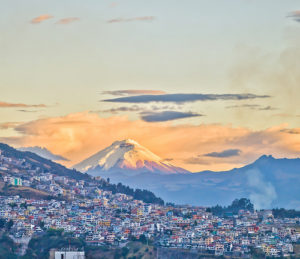 With only a point shave of difference between the rankings of Panama and Ecuador on our Global Retirement Index, you may wonder what could possibly have happened in the past year for Ecuador to slip from the top spot.
With only a point shave of difference between the rankings of Panama and Ecuador on our Global Retirement Index, you may wonder what could possibly have happened in the past year for Ecuador to slip from the top spot.
The answer: nothing. Ecuador remains the perfect-weather, majestic-scenery, affordable place it has always been. The Ecuadorians are just as warm and welcoming and the opportunities for retirement are just as fertile. And Ecuadorremains a top destination when it comes to affordability.
Where else can you rent an upscale, fully furnished apartment in the heart of one of the world’s largest World Heritage historic centers for just $400 a month? Or take a taxi across town for just $2 or $3?
Most retired couples in Cuenca, the most popular destination for English-speaking retirees in Ecuador say they live there quite comfortably—all in—for $1,500 to $1,800 a month. And that typically includes rent. Two- and three-bedroom apartments can be rented for $300 to $600 and that often includes furnishings.
You’ll find Cuenca, a city of 350,000 to 500,000 (depending how widely you throw the net) in southern Ecuador, closer to the country’s second international airport at Guayaquil than to Quito. Like Quito, the central historic area of Cuenca is also a World Heritage site and the iconic blue domes of its new cathedral and the red tiles of the ancient Spanish colonial buildings can be seen from the windows and terraces from many an expat residence.
Another place where the scales tip decidedly in Ecuador’s favor is in the climate category. In the country’s Sierra region, you’ll find daytime temperatures typically hover around 75 F, which means you’ll find little need for either heat or air conditioning. (International Livingeditors Suzan Haskins and Dan Prescher, who live in the mountains of Ecuador, say their typical utility expenses…for electricity, water and gas…are rarely more than $30 total.)
Even along the coast, despite the equatorial location, daytime temperatures rarely reach 90 degrees, and you’ll experience far less humidity than in many other tropical destinations.
Like other top retirement destinations, Ecuador offers a good private health care system, especially in the three largest cities of Quito, Guayaquil, and Cuenca. And if you’re over 65, you can avail of some nice retiree benefits, including a return of money spent on VAT (value-added tax) on your purchases refunded each month—up to about $250.
Ecuador offers something for everyone, whether you’re looking for sophisticated city living or the life of a gentleman farmer… And for a small country (about the size of the state of Colorado) it packs a big punch environmentally. Cutting through the middle of the country from north to south, you’ll find the majestic Andes mountains that rise to heights of 20,000 feet above sea level. To the east is the Amazon basin with it verdant rainforest and to the west, you can explore hundreds of miles of sparsely populated coastline where you’ll often have the beach to yourself.
We’ve seen expat retirees move to coastal Ecuador, especially, where tourism is still in its infancy as compared to other better-known destinations, and open restaurants, B&Bs, offer transportation services, and more. As in Panama, Ecuador hasn’t lagged in its infrastructure progress. This past February, the country’s new $680-million airport opened just outside Quito, with improved safety features and cargo capacity, and the longest runway of any international airport in Latin America. In the northern area of the country, a high-tech “City of Knowledge,” called Yachay, is being built. Work continues at a steady pace to upgrade and widen the Pan-American Highway.
The economy, too, is stable and growing—Ecuadorians themselves are enjoying better-than-ever lifestyles. Cellphones are ubiquitous, the internet is faster than ever, and integrated computer systems make everything from immigration functions to health care information easier and quicker than ever to access.
So if you’re on the fence, trying to decide between the top countries on our Global Retirement Index this year, you have a tough choice. Ecuador remains a top contender.
Malaysia—Asia’s Best Retirement Haven
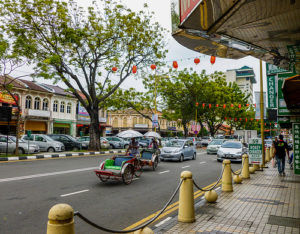 Malaysia is the best place to retire in Asia right now, and there’s no sign of that changing. A couple can live comfortably in a luxury ocean-view condo on $1,700 a month including rent. (We know of couples living more modestly on even less…try $1,000 a month, including rent.)
Malaysia is the best place to retire in Asia right now, and there’s no sign of that changing. A couple can live comfortably in a luxury ocean-view condo on $1,700 a month including rent. (We know of couples living more modestly on even less…try $1,000 a month, including rent.)
The average temperature is 82 F all year round, and you’ll find some of the best beaches in the world here. There are cool hill stations, mountain retreats from the time of the British Raj, islands to hop or explore by yacht, and heath care is second-to-none.
Penang Island, in the north east and Kuala Lumpur, the country’s capital in the south, are medical centers of excellence. The hospitals are top-notch and the physicians speak English, having been either been trained or completed their postgraduate studies in the U.S. or UK—which makes the cost of health care all the more incredible. You can see a specialist without any need for an appointment for as little as $11. Just turn up. It’s the same with dentists.
Infrastructure here is First World and you’ll have no problem finding high speed Internet or cable TV (Packages cost from $30 a month). If you chose to drive you’ll find the roads are excellent. And when you move to Malaysia you can import a car—and your household goods—duty free.
There is a program that allows non-Malaysians to stay in Malaysia on a social visit pass for 10 years. Called Malaysia my Second Home, it’s automatically renewable for an additional 10 years when it expires. If you are retired, you need a fixed deposit of RM150,000 ($46,707), and you can draw down half that to buy a property, go back to school, or for medical purposes. On top of that you must show proof that you receive a pension from the government of RM10,000 ($3,114) per month. As a rule of thumb the older you are the easier and cheaper it is to join the program.
If you chose to buy property Malaysia makes it easier for you as a foreigner than anywhere else in the region. You can buy freehold and there’s no limit on the number of properties you can own either, just a minimum purchase price set by the local government (it’s $163,500 in Penang).
The country’s diverse ethnic mix makes being a stranger here easy. Whether you live in bohemian Penang or Kuala Lumpur, the country’s hip capital, you’ll meet friendly locals who are happy to stop and chat and welcome you into their home. People are accepting, just ask the international mix of expats all on the same journey as you and happy to share.
Many expats are members of organizations like the American Association of Malaysia and an active social life is easy to find. With good quality dining so cheap (you can have dinner for $3, a gin and tonic is $2) most people find themselves out at least a few times a week.
If you want to keep busy and earn some money, starting your own business is an uncomplicated process. There are expats here running cafés, yoga studios, restaurants, and schools and making money through exporting optic fiber cabling.
Malaysian’s also have a lot of respect for older people; in fact it’s an intrinsic part of their culture. A full-time, live-in maid costs just $400 a month, and single older expats hire maids with nursing abilities, who care for them in the comfort of their own home. Betty Cotton, who lived in San Francisco for many years does just that and wouldn’t be without her live-in maid. “I moved to Malaysia by myself when I was 85 years old. I live in my own home, I have my own things around me, and if I need anything, anything at all, I have great neighbors who are just a phone call away. I wouldn’t live anywhere else.”
Costa Rica—Among the Best for Health Care
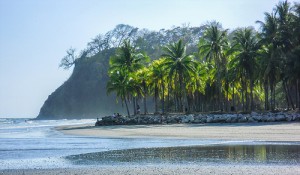 Costa Rica is one of the original overseas retirement destinations. It’s been welcoming expats for more than 30 years; a legacy of the year-round warm weather, as well as longtime political stability and public safety.
Costa Rica is one of the original overseas retirement destinations. It’s been welcoming expats for more than 30 years; a legacy of the year-round warm weather, as well as longtime political stability and public safety.
And it’s still going strong because the country continues to tick the boxes of those looking for their place in the sun. Plus, because of its long history as an expat haven, it’s easier than ever to start a new chapter in your life.
Anywhere you choose to move there are plenty of services set up to make the transition easy, from getting household goods and pets down to finding a dream home on a tight budget to securing residence…and everything else.
One of the biggest draws of Costa Rica is the ease of becoming a legal resident. It offers a great program for pensionados, or retirees. The main qualification is an income of $1,000 or more per month from Social Security, disability benefits, a pension, or similar source. One spouse must show that income, and then they can bring their better half along as a dependent.
Of course, one of the biggest perks of residency is the public health system, known as Caja. After a monthly payment based on income (most expats pay between $50 and $150), you receive completely free care: doctor’s visits, testing, prescriptions, and even major surgeries. Public facilities are some of the best in Latin America. And there are no age or pre-existing condition exclusions—everybody can join. One expat I know in the Central Valley moved to Costa Rica with multiple sclerosis and is completely taken care of for less than $50 a month. His insurance costs in the U.S. were more than $1,200.
There are also private clinics, hospitals, and doctor’s offices located throughout the country. You can use insurance (most international policies accepted) or pay cash. But even out of pocket, costs are a half to a third or even less of what they would be in the U.S. for the same procedure.
It’s just one way expats cut down on their cost of living. Plenty of expat couples live on less than $2,000 per month, including housing and transportation costs. One way to save is to shop like a local. That means heading to the feria, or farmers’ market, each week for fruits and vegetables; fish, chicken, beef, or pork; eggs; honey; bread…pretty much anything you need. My family of four spends about $40 per week at the feria—and the fridge is filled to bursting. You can eat out affordably too. A tasty meal at a local restaurant will run you $4 – $5.
These are few of the many “practical” reasons Costa Rica makes sense for retirees. But on a cultural level too, Costa Rica offers a lot. Ticos (as Costa Ricans call themselves) are happy, friendly people in general—polite, too. In fact, Costa Rica was named the world’s happiest country in the 2012 Happy Planet Index—it won in 2009 as well.
They like to make friends with their new “gringo” neighbors. And if you make an effort, you can quickly become part of the community and be invited to family gatherings—family is huge in Costa Rica— and town festivals. And you don’t have to speak Spanish by the way—just a few words go a long way. A smile is universal. There’s also an ingrained respect for the older generation. In Costa Rica, retirees are valued members of society. By law, they’re given head of line privileges at banks and government offices. And at stores and other places of business it just happens—it’s how people were raised.
It’s all part of the Pura Vida attitude that permeates life in Costa Rica. It means people work to live, not live to work. And above all they value time with friends and family. As a result things move at a slower pace…and expats soon adjust.
Spain—Europe’s Hottest Retirement Destination
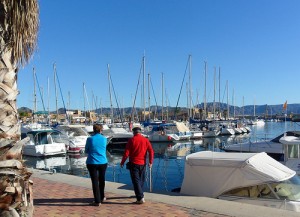 For anyone who’s been there recently, it’s no surprise that Spain is one of the top five destinations in this year’s Global Retirement Index. Spain is arguably the best bargain in Europe, offering First-World living at a cost that can compete with some Latin-American countries.
For anyone who’s been there recently, it’s no surprise that Spain is one of the top five destinations in this year’s Global Retirement Index. Spain is arguably the best bargain in Europe, offering First-World living at a cost that can compete with some Latin-American countries.
Thanks to the on-going recession, real estate prices in many parts of Spain have plummeted. Buying here is more affordable now than it’s been in decades. On much of Spain’s Mediterranean coast, for instance, you can buy a beach condo today for $150,000 or less—sometimes much less. Prefer to rent? Long-term rentals start at about $550 a month in Alicante and at about $850 in Málaga, for instance. (And although these are both tourist destinations, they’re also real cities, with shops, markets, and cinemas, so you can easily live a non-tourist life, just as local Spaniards do.)
Even before the recession, Spain was one of the least-expensive countries in Western Europe, and that remains true. Day-to-day expenses, for instance, can be very low. Pick one of the many areas with a warm, mild climate, and your monthly utilities can run you $150 or less. Stick with a Mediterranean diet—the doctors’ favorite for good health—and your grocery bills will be as slim as your figure. (And, while there are plenty of supermarkets everywhere, you can still shop in colorful, traditional markets if you prefer. Bilbao, in northern Spain, and Alicante both have especially nice ones: large, beautiful, and well-stocked.)
In general, fruit and vegetables here are good, plentiful, and cheap. (In summer many fruits and veg go for €1 a kilo, which works out to about 59 cents a pound.) Olive oil and wine are produced locally and are also cheap—I often paid $5 a bottle for decent wine last summer and about the same for a liter of good olive oil. Yes, meat is more expensive than in the U.S.—but once you’ve tried Spain’s roast suckling pig or grilled lamb chops, you’ll think they’re worth every penny.
No matter where you live in Spain, you’ll have easy access to the rest of the country—and to the rest of Europe, too. Modern, high-speed trains can get you from one end of Spain to the other in about seven hours. Or take the bus—fares are low, and bus routes crisscross the country. You can fly directly from North America to Madrid, Barcelona, and other metropolises. The many smaller, regional airports can zip you around Spain and to the rest of Europe (often on cheap, discount airlines).
It’s cheap and easy to stay in touch with those back home, too: Fierce competition among phone carriers has brought prices way down… We know folks paying under $60 a month for a combined cell phone/Internet/cable TV connection…and offers like this are pretty standard.
No need to worry if you get sick here, either. Spain has nationalized, public health care as well as private health care—and both systems are excellent. Good hospitals abound, too—even in rural Spain, you’re never more than a few hours from a good hospital.
But Spain’s biggest plus may be the people and the lifestyle. Warm and engaging, Spaniards believe in enjoying life, and they put a high value on friends and family. So do as they do… On long summer evenings, when the sun doesn’t set until 10 p.m., sit at an outdoor café with friends until the wee hours…bathe in the warm waters of the Mediterranean…gaze on the Alhambra at sunset…hike the hills of green, northern Spain…explore castles both ruined and restored… For rich, fulfilling living, it doesn’t get much better than this.
See here for the final scores in every category.
See here for photos of the world’s top 10 best retirement countries.
To read more about the world’s best places to retire overseas, see here.
